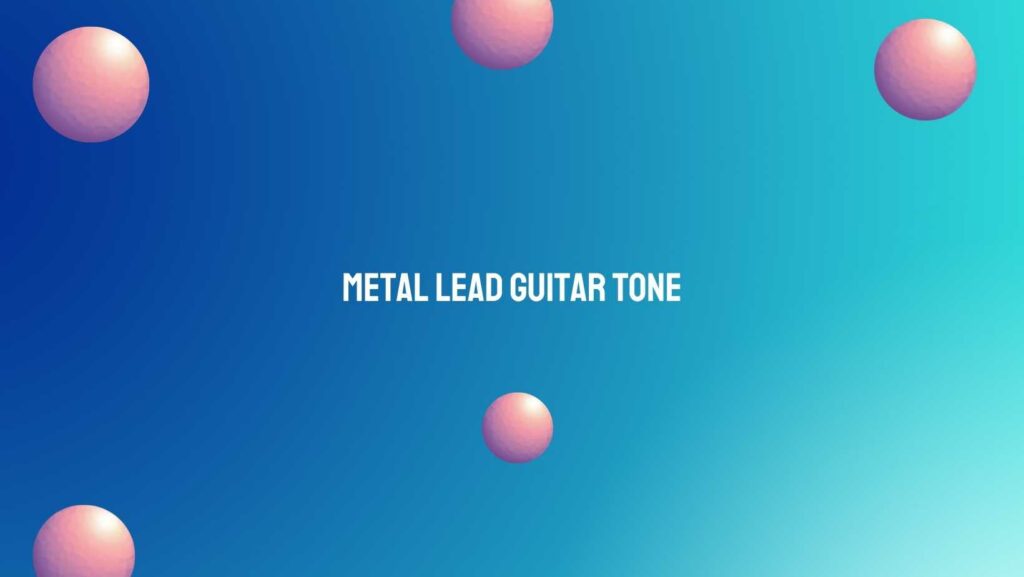In the world of music, few genres possess the raw power, intensity, and virtuosity of heavy metal. At the forefront of this audial onslaught, the electric guitar reigns supreme, serving as the principal vehicle for delivering the genre’s adrenaline-pumping riffs and searing solos. Among the most critical components of a metal guitarist’s arsenal is the quest for the perfect lead guitar tone. This tone is more than just an auditory experience; it’s a visceral and dynamic expression of the artist’s personality and creativity. In this article, we delve into the depths of the metal lead guitar tone, exploring its origins, essential components, and techniques to achieve that electrifying sound that defines the genre.
The Genesis of Metal Lead Guitar Tone
The roots of metal lead guitar tone can be traced back to the pioneering work of guitarists like Tony Iommi of Black Sabbath and Ritchie Blackmore of Deep Purple in the late 1960s and early 1970s. These musicians were among the first to harness the power of distortion, a phenomenon created when a guitar’s signal is overdriven beyond its normal limits. This early experimentation laid the foundation for the aggressive, cutting, and heavy sound that would become synonymous with metal lead guitar.
Components of the Perfect Metal Lead Guitar Tone
Achieving the ideal metal lead guitar tone is an intricate process that involves numerous components working in harmony. Let’s break down these components:
- Guitar Selection:
- Wood: The type of wood used in the guitar’s body can significantly impact the tone. Mahogany and alder are popular choices for their warm, resonant properties.
- Pickups: Humbuckers are the preferred choice for metal lead guitars due to their high output and reduced noise.
- Scale Length: A longer scale length can enhance clarity and sustain, essential for lead work.
- Amplifiers:
- High-Gain Amps: Amplifiers with a high-gain channel are a staple for metal guitarists. Brands like Marshall, Mesa Boogie, and Peavey have iconic models tailored for this genre.
- Tube vs. Solid-State: Many metal guitarists favor tube amplifiers for their warm and dynamic sound. However, modern solid-state amplifiers offer reliability and consistent performance.
- Distortion and Overdrive Pedals:
- Distortion and overdrive pedals, such as the classic Boss DS-1 and the Ibanez Tube Screamer, are integral to shaping a metal lead tone.
- Combine different pedals to create a unique tonal profile.
- Effects:
- Reverb, delay, and modulation effects can add depth and character to your lead sound, creating a sense of space and ambience.
- String Gauges:
- Heavier gauge strings can improve sustain and provide more stability when performing aggressive bends and vibrato.
- Playing Techniques:
- Palm Muting: An essential technique in metal, palm muting adds percussive power to your tone.
- Vibrato: Controlled and expressive vibrato adds depth and emotion to your solos.
- Speed and Precision: Metal lead guitar demands fast, accurate picking and fretting.
- Equalization (EQ):
- Scooped Mids: Reducing mid frequencies while boosting the lows and highs is a common EQ setting for metal guitar, creating a powerful, heavy sound.
- Cabinet and Speaker Selection:
- The choice of speaker cabinets and their mic placement can dramatically alter your sound. Experimentation is key.
A Quest for Uniqueness
While the components mentioned above serve as a blueprint for creating a powerful metal lead guitar tone, it’s crucial to remember that true tone mastery often comes from experimentation and personalization. Many legendary metal guitarists have carved their niche by modifying and fine-tuning their setups to reflect their unique voices.
In the realm of music, few genres possess the visceral intensity and expressive potential of metal. At the forefront of this relentless storm of sound is the lead guitar, wielding the power to transport listeners to realms of darkness and power. Achieving the perfect metal lead guitar tone is an art and science, encompassing a careful selection of gear, a deep understanding of technique, and a thirst for experimentation. The metal lead guitar tone is a dynamic canvas on which guitarists paint their emotions, and its raw power has the potential to move mountains and audiences alike. For those who embark on this quest for tonal perfection, the journey is just as important as the destination.


